originally posted at https://canmom.tumblr.com/post/625627...
Don’t worry, it’s not Thursday yet. Thought I’d make the announcement a little early :p
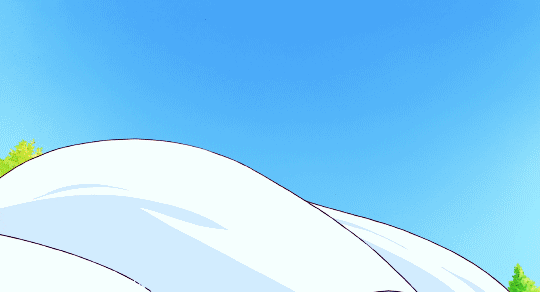
This time, we’re going to be focusing on a very well-loved studio: Kyoto Animation, creator of massively influential titles like K-On!, The Melancholy of Haruhi Suzumiya, Hibike! Euphonium and Free! Iwatoba Swim Club.
Per this excellent history on Sakugabooru, KyoAni’s been around in some form since the early 80s, when their founding couple Yoko and Hideaki Hatta moved out to Kyoto prefecture. In their early days, “Kyoto Anime Studio” was a semi-professional group of “housewives painting animation cels” led by Yoko Hatta, contributing inbetweens to a variety of shows including Super Dimension Fortress Macross. In 85, the Hattas moved to found an actual company under the name Kyoto Animation, and collaborated on a number of projects to make inbetweens, key animation and backgrounds (on eva!) and working with major figures like Production IG founder Mitsuhisa Ishikawa.
Bizarrely, their earliest original work was actually a promotional video for a cult - in the 90s, they were mainly hired for this kind of animation. They started to develop the style they’re known for under the influence of Shin-Ei’s Yoshiji Kigami, known for his work on huge films like Grave of the Fireflies and Akira. Kigami had a profound influence on KyoAni’s ongoing emphasis on character animation and meticulous attention to detail. And I could go on - read that history article for a number of other major figures.
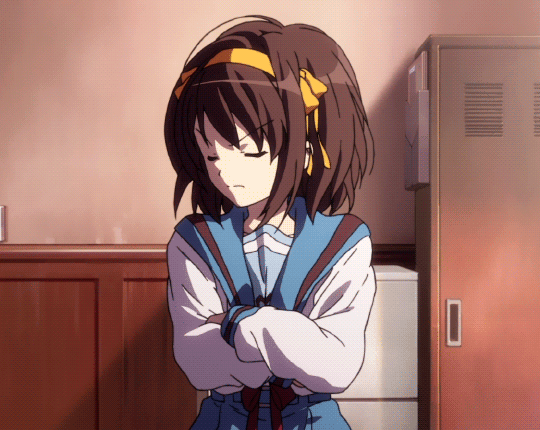
Particularly in director roles, the anime industry is rather infamously dominated by men. In previous animation nights, we’ve seen just how many times, even for incredibly skilled artists, this haslead to really unconscionable choices of content and presentation, particularly around portrayal sexual assault. Thankfully, KyoAni stands as an all too fucking rare exception, regularly putting women in charge of projects and generally creating a work environment that’s not nearly as brutal a pressure cooker as a lot of studios. SakugaBooru cites Tomoe Aratani, who began as an Inuyusha storyboarder (collaborating with Sunrise) and soon moved between various positions including character design and episode direction, as one of the studio’s particular stars in the 90s.
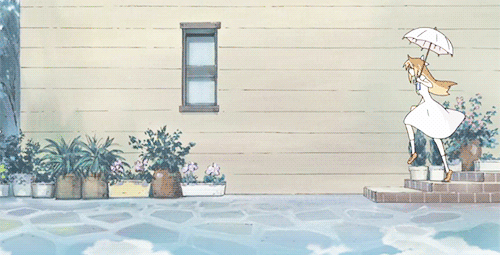
In the 2000s, KyoAni moved from mostly assisting other studios to creating a lot more original work. They quickly embraced the move from cels to digital animation on sakuga-rich shows like Munto, while maintaining their big emphasis on character animation. A great deal of their work is adapted from visual novels and light novels, and they run an annual competition to invite story submissions which, if they do well, KyoAni might adapt into anime.
While many of the directors we’ve seen so far focus on action and sci-fi, or weird psychedelic visuals (because that’s what I’m mainly into!), KyoAni’s work broadly leans more towards slice of life, if sometimes leaning into magical realism with shows like Haruhi Suzumiya or sports anime with shows like Free!. Music is definitely a recurring element: in K-On!, schoolgirls form a band; in Hibike! Euphobium, the characters are members of an orchestra.
What makes them stand out is a talent for really beautiful, elegant character animation, a lot of skill at emotional storytelling, incredibly meticulous attention to detail, and independence from the rest of the inudstry in a way that leads to a specific, recurring style. (As I understand it, and I could be off-base here, they are one of the few studios, along with [until recently] Ghibli, who pretty much keep on staff full-time rather than hiring them for the duration of a production - something that’s possible because the cost of living in Kyoto is a lot less than in, say, Tokyo.)
Compared to many anime studios, KyoAni also has generally much better working conditions for inbetweeners, who are all too often overworked and given little respect compared to other positions like key animation. Here, too, KyoAni can claim an exception… and while that’s a really fucking good thing in itself, it might also go some way to explaining why their drawings are so consistently clean and elegant. The ‘inbetweens’, which include redraws of the key frames, are after all what we actually see when we watch anime.
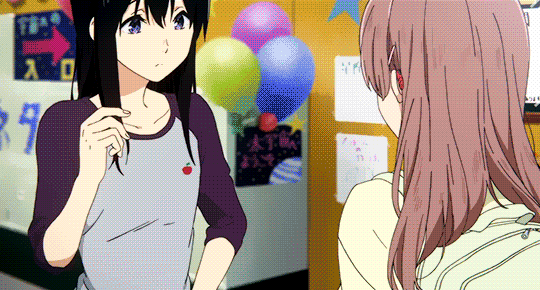
Of KyoAni’s many great directors and artists, we’ll be particularly focusing on the recent work of Naoko Yamada, who went up through the the traditional route of inbetweens, but soon became a key animator on AIR!, gradually working up through episode direction before directing her own series and films. As a director, she made a huge splash with K-On! in 2009. Yamada has since become really renowned for strongly emotional, beautifully edited films like A Silent Voice and Liz and the Blue Bird. She’s often compared with her contemporary Makoto Shinkai, whose films take a similar style.
She’s had a pretty interesting career, citing a diverse set of influences including live action film and oldschool Soviet animation. There’s a really lovely, detailed post giving her biography on sakugabooru, which is worth a read! As a key animator and episode director, she really pushed the envelope with unusual, extreme-perspective shots and stark, photographic lighting.
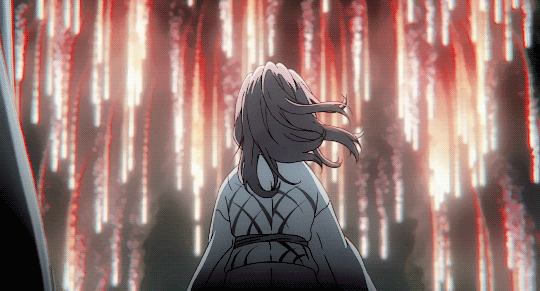
A Silent Voice/Koe no Katachi, adapted from a manga by Yoshitoki Ōima, tells the story of a suicidal boy Shoya and a deaf girl Shoko who, along with his classmates, Shoya brutally bullied in middle school. Shoya is absolutely wracked with guilt and alienated from everyone around him, but his suicide plans are interrupted when he unexpectedly meets Shoko again. The subject matter is really heavy, but the film handles it with a lot of care and grace; it’s probably one of the best examples of a story about redemption/recovery and growth I’ve seen (makes me cry every time etc.) Also one of the few anime to depict Japanese Sign Language.
Liz and the Blue Bird ties in to the broader story of Hibike! Euphonium, with the Euphonium characters appearing in the background, but it’s a standalone story. It focuses on Mizori, an oboist, and Nozomi, a flutist, in a school orchestra, and the complex relationship of unconfessed feelings and unreciprocated love between the two girls. It’s told through a lot of absolutely gorgeous animation, everything alive and timed to music, conveying a lot of subtle emotion with some real animated acting expertise. Just… don’t expect a simple ‘and then they get together’ lesbian love story, that’s not what it’s going for.
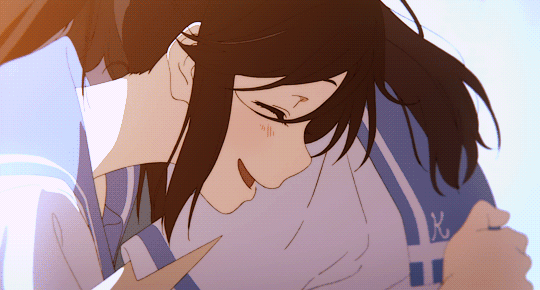
In addition to those two films, I’m going to be picking out a few excerpts from other KyoAni shows, like the concert scene in The Melancholy of Haruhi Suzumiya. It’s kind of tricky to build a playlist like this for one night because most KyoAni works are really long, they don’t really do short films, and their feature films are usually sequels to a 26-episode series! So, since I’ve not had time to review the full KyoAni corpus (:p), I’d really love some help here - let me know if there’s something on the short side you’d love to see as a group?
Tragically, Kyoto Animation was the victim of a brutal arson attack about this time last year, which killed 36 of its workers and injured a similar number. In the aftermath, there was a huge outpouring of support from fans and other animation studios, allowing the studio to survive, only of course to then get hit by the pandemic some months later, which forced them (like many studios) to work from home, delaying production even further. Yet despite the horrific shit they’re going through, they’re still making anime, and next month they’ll be returning with a new Violent Evergarden film.
(Also… I have to admit I have been kind of sleeping on KyoAni. Part of the impetus here for me is to get more familiar with them. if it seems like all i seem to know about are two yamada films and haruhi… that’s unfortunately the case! I really need to check out more of their older work. Looking forward to exploring it with all of you though <3)
Animation Night 13 will be running at twitch.tv/canmom on Thursday 6 August at 7pm UK time.
Comments